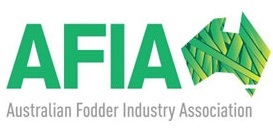
This article is bought to you by Australian Fodder Industry Association.
By Angus Brown | Source: MLA, Feedcentral, Auctionsplus
Improving seasonal conditions in the south have seen young cattle prices improving. Supply is getting tighter and demand stronger, and this week we take a look at whether there again money in growing out young cattle.
Store cattle price series are relatively hard to come by, but we get a good idea from the Eastern Young Cattle Indicator (EYCI) underlying data. In the north there are good numbers of restocker cattle in EYCI yards, but in the south yardings are a little thin. Hence prices bounce around, (figure 1) but an upward trend can be seen.
Ad -The Australian Fodder Industry Association or AFIA's Annual Conference is on the 29-31 July. Click here for more info or to become a member today - Ad
Ad -The Australian Fodder Industry Association or AFIA's Annual Conference is on the 29-31 July. Click here for more info or to become a member today - Ad
Figure 1 shows it was this time last year when restocker prices tanked, as winter rainfall dried up. With good June and July to date rains in Victoria, South East SA and parts of southern NSW, restocker cattle prices should remain above last years for the time being.


The southern restocker in EYCI saleyards sits at 272¢/kg lwt. On Auctionsplus weaner steers around 250 are making 300-320¢/kg lwt, which is close to a usual premium to EYCI restocker prices. As has been the trend in times, the heavier the weaners are, the higher the price. Competition from lotfeeders has southern weaner cattle over 330kgs lwt making over 340¢/kg lwt.
For the purposes of a trading budget, we’ll say 250kg weaner steers can be bought for 315¢/kg lwt, or $787.5 per head. Figure 2 shows there are good margins in backgrounding cattle for feedlots, even at prices which are at the low end of the recent scale. Historically a margin of $250-300 per head, achievable at a feeder price of 280¢, on backgrounding was good. Margins of $500 or more are very good.
Ad -The Australian Fodder Industry Association or AFIA's Annual Conference is on the 29-31 July. Click here for more info or to become a member today - Ad
Ad -The Australian Fodder Industry Association or AFIA's Annual Conference is on the 29-31 July. Click here for more info or to become a member today - Ad
The fact that feed is still expensive is seeing restocker cattle still at a larger than normal discount to feeder and finished cattle. With hay still at $400-500/t delivered, any hay which needs to be fed will start to eat into profits. A month of a full hay ration will cost close to $100, so producers need to be confident the much cheaper grass will arrive in the spring.


Key points
* Store cattle prices have been rising, now stronger than this time last year.
* Gross margins on backgrounding or finished cattle are still historically very good.
* High feed costs are contributing to strong margins, as are poor rainfall forecasts.
What does this mean?
Since we last looked at trading margins on young cattle weaner steer prices have gained 70-90¢/kg lwt. The cheapest cattle were back in March, and things have improved in the store cattle market since then. We are still a long way from the possible peak of store cattle prices. We know that when grass is abundant and cattle in short supply store cattle will go to a strong premium to feeders and finished cattle.
The Bureau of Meteorology are not inspiring a lot of confidence in the spring, but there will be good rewards for those who take the punt if we do get a normal spring.












Share Ag News Via